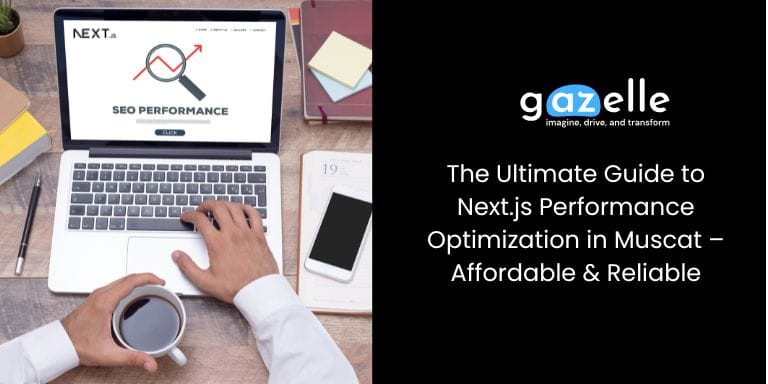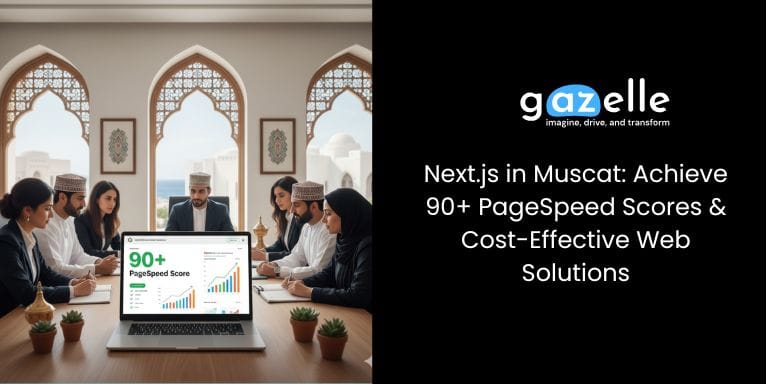Next.js Tailwind CSS Oman is redefining how businesses approach web development in the region. As more companies in Oman aim to create high-performance, modern, and responsive web applications, the combination of Next.js and Tailwind CSS offers an unparalleled solution.
Next.js is a React-based framework that enables server-side rendering (SSR) and static site generation (SSG), improving both performance and search engine visibility. Tailwind CSS, on the other hand, is a utility-first CSS framework that allows developers to build visually appealing and responsive designs quickly. Together, they provide a powerful toolkit for Omani businesses looking to deliver fast, SEO-friendly, and visually engaging web apps.
What Makes Next.js Tailwind CSS Ideal for Oman Businesses?
1. High Performance and Speed
Web performance is critical for businesses in Oman. Users expect websites to load instantly, whether they are accessing services in Muscat, Salalah, or Sohar. Next.js Tailwind CSS Oman websites are optimized for speed: SSR and SSG reduce server load, while Tailwind CSS ensures minimal and efficient styling. This combination guarantees fast-loading, responsive web apps that enhance user experience and increase engagement.
2. SEO Advantages
Next.js provides server-side rendering, which makes it easier for search engines to crawl and index content. For Omani businesses targeting local customers, this means higher visibility on Google and better ranking in search results. Tailwind CSS further complements SEO by keeping HTML clean and lightweight, which reduces page load times—another factor that search engines consider for ranking.
3. Responsive and Mobile-First Design
With a growing number of users in Oman accessing websites via mobile devices, responsive design is essential. Tailwind CSS’s utility-first approach allows developers to create flexible and adaptive layouts that look great on any screen size. Combined with Next.js, businesses can ensure that their websites provide a consistent experience across desktops, tablets, and smartphones.
4. Scalability for Growing Businesses
Next.js is built to handle projects of any scale. Whether a company is a small startup in Oman or a large enterprise expanding its digital footprint, Next.js Tailwind CSS Oman provides a scalable architecture that can grow with the business. Adding new features, pages, or integrations becomes easier without compromising website performance.
5. Simplified Development and Maintenance
Tailwind CSS allows developers to apply styling directly within HTML classes, reducing the need for complex CSS files. This simplifies the development process, decreases bugs, and makes ongoing maintenance more manageable. Businesses in Oman can benefit from faster development cycles and reduced costs while maintaining high-quality web applications.
How Next.js Tailwind CSS Oman Supports Business Goals
Enhanced User Experience
User experience is critical for online success. Next.js Tailwind CSS Oman helps businesses deliver web apps that are intuitive, fast, and visually appealing. Clean designs and responsive layouts ensure that visitors can easily navigate websites, find information, and take desired actions, such as making a purchase or filling out a contact form.
Improved Conversion Rates
A fast, responsive, and visually consistent website increases user engagement, which can lead to higher conversion rates. By leveraging Next.js Tailwind CSS Oman, businesses can optimize every aspect of their web apps to drive sales, inquiries, and customer interactions.
Local SEO Optimization
For businesses targeting the Omani market, incorporating localized keywords and content into Next.js Tailwind CSS Oman projects ensures better visibility in local search results. Combining technical SEO features of Next.js with a clean, structured design from Tailwind CSS allows companies to rank higher for region-specific searches.
Future-Proof Technology Stack
Next.js and Tailwind CSS are both continuously updated frameworks with active communities. Choosing this stack ensures that Omani businesses invest in technology that will remain relevant, adaptable, and compatible with future web standards.
Best Practices for Implementing Next.js Tailwind CSS in Oman
- Use Focus Keywords Strategically – Incorporate terms like “Next.js Tailwind CSS Oman” naturally in headings, content, and metadata for SEO.
- Optimize Images – Compress images and use appropriate alt text to enhance SEO and performance.
- Leverage Server-Side Rendering – Use SSR for dynamic content to improve SEO and page load speed.
- Adopt a Mobile-First Approach – Ensure designs are responsive using Tailwind CSS utilities.
- Monitor Performance – Track user interactions and page speed with tools like Google Analytics and Lighthouse to continuously improve.
- Maintain Clean Code – Tailwind CSS encourages minimal, organized CSS, keeping websites lightweight and maintainable.
Conclusion: Unlock the Potential of Next.js Tailwind CSS in Oman
For businesses in Oman, Next.js Tailwind CSS Oman provides a robust, modern solution for building future-ready web applications. It combines high performance, responsive design, scalability, and SEO advantages to help companies achieve their digital goals.
Investing in this technology stack ensures that Omani businesses can deliver fast, visually appealing, and engaging web apps that meet the expectations of today’s users. By leveraging Next.js and Tailwind CSS, companies in Oman can enhance their online presence, attract more customers, and stay competitive in a fast-evolving digital landscape.






